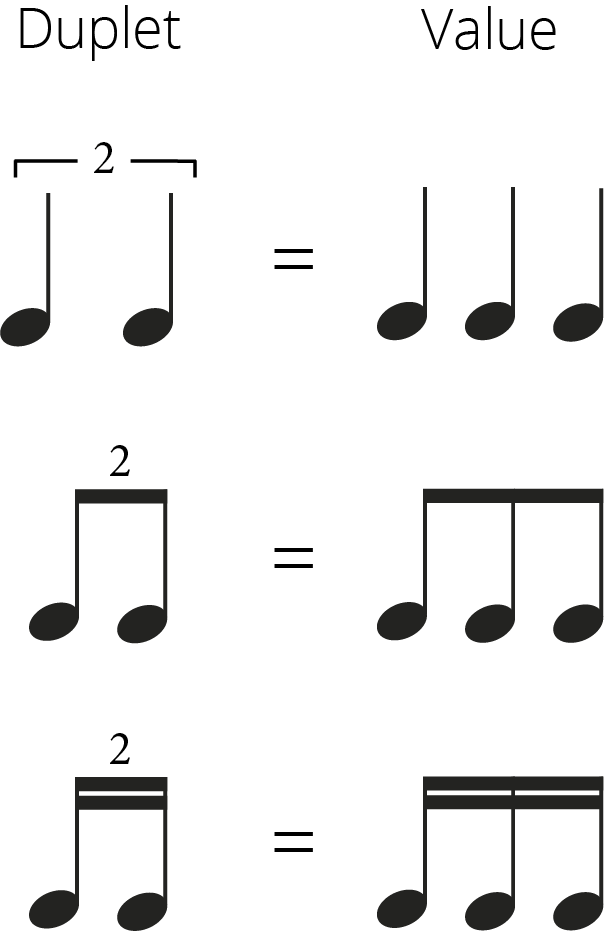ABRSM Grade 5 Music Theory requires pupils to know a variety of different note and rest types. These are mostly covered in grade 1-4 but I have found that my students like to revise them to make sure they know what they all are.
Check out out complete list of Grade 5 Music Theory Notes and rests you need to know, from demisemiquavers to triplets to breves!
Want to learn more about Grade 5 Music Theory, have a look at our in-depth guide to ABRSM Grade 5.
Notes (UK)
Crotchets
Crotchets are worth one beat.
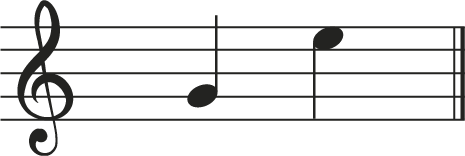
Minim
A Minim is worth two beats or 1 minim = 2 crotchets.
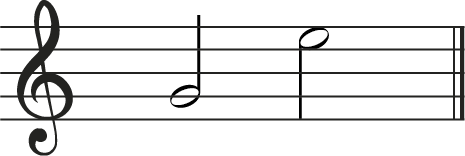
Semibreve
A semibreve is worth 4 beats or 4 crotchets. A semibreve is also equivalent to 2 minims.
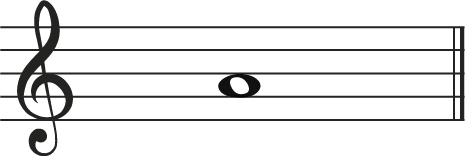
Breve
A breve is worth 8 beats or 8 crotchets. It is the same length as 2 semibreves.

Quaver
We are getting smaller now – onto quavers. A quaver is worth 1/2 a beat. 2 quavers added together will be 1 crotchet.
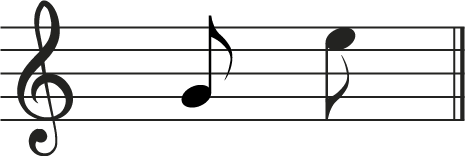
Semiquaver
A semiquaver is worth half of a quaver. 2 semiquavers added together is 1 quaver. If you have 4 semiquavers, this is equivalent to 1 crotchet
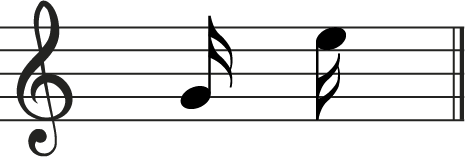
Demisemiquaver
Demisemiquavers are half the length of semiquavers. So 2 demisemiquavers are equivalent to 1 semiquaver and 8 demisemiquavers are equivalent to 1 crotchet.
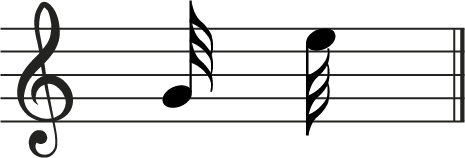
Rests (UK)
Here are a list of the rests that match each note. These are in UK terminology.

Dotted Notes and Rests (UK)
Dotted notes and rests have one and a half times the value of the original note. You could say the dot adds half the value again to the note/rest.
For example a dotted crotchet is worth 1 and 1/2 beats.
A dotted semibreve is worth 6 beats (as a semibreve is worth 4 on its own).
Here are a list of the main dotted notes and their values.
Here is a list of the main dotted rests and their values.
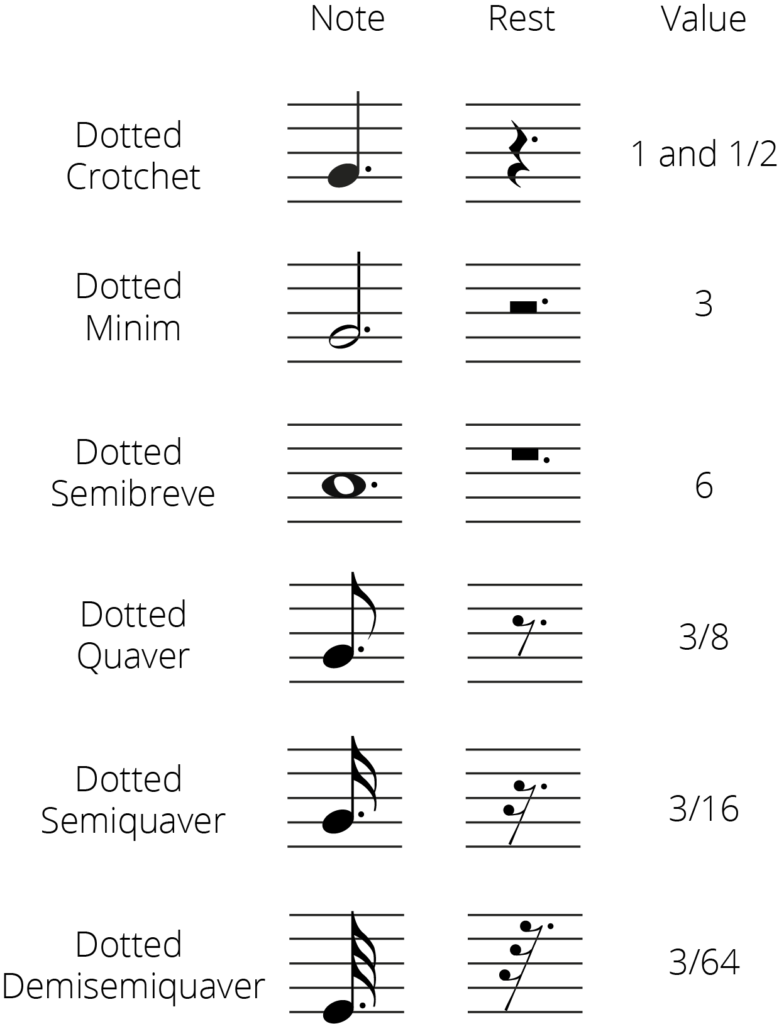
Double Dotted Notes and Rests (UK)
Double dotted notes hold 1 and 3/4 of the value of the original note. The first dot adds half the value of the note and then the second dot adds half of the half! If we apply this to a double dotted crotchet, the first dot will add a quaver. The second dot will then add half the value of the quaver, which is a semiquaver. So the note is worth 1 crotchet + 1 quaver + 1 semiquaver OR 1 and 3/4 beats.
Here is a diagram with all the main double-dotted notes and their values,
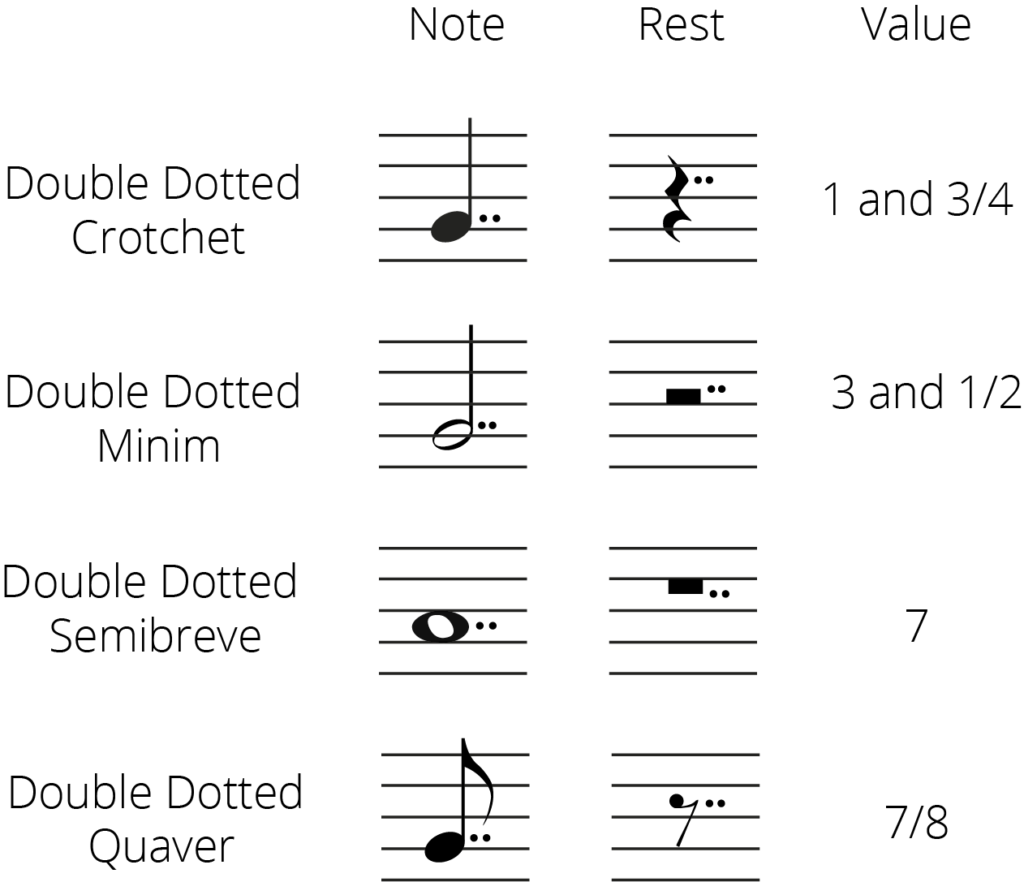
Triplets and Duplets (UK)
Triplets are shown with a small ‘3’ above a group of three notes. This shows the player that these 3 notes should be played in the space of 2.
For example, below we have three quavers as a triplet. This means the 3 quavers should be played in the space of 2 quavers. We can do this when we have a simple time signature, such as 4/4, where the main beats would usually divide into two quavers.
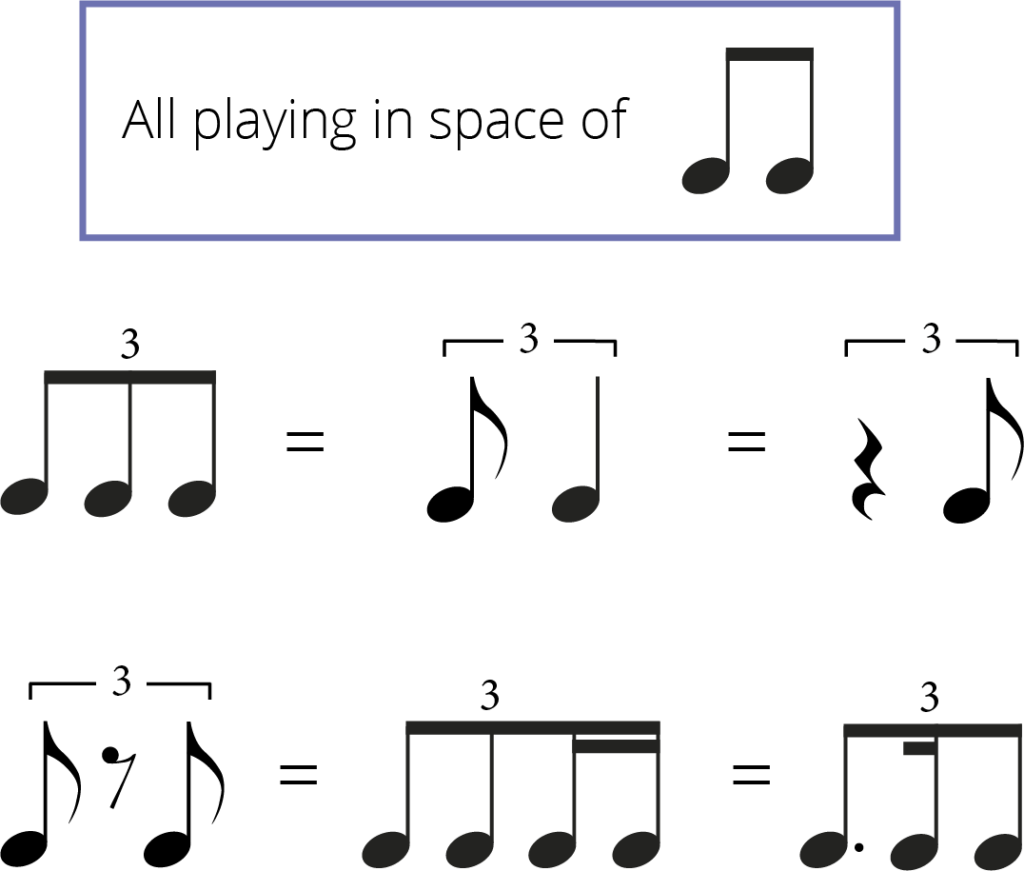
Here is an example of a triplet using semiquavers. Here the three semiquavers are played in the space of two semiquavers.

Duplets are shown as two notes with a small ‘2’ above them. They are the opposite of triplets, meaning that we have two notes being played in the space of three. This can be useful when playing in a compound time signature where each strong beat should divide into 3.

Notes (US)
- Quarter notes (crotchet) are worth one count.
- Half Notes (minims) are worth two counts.
- Whole notes (semibreve) are worth four counts.
- Double Whole Notes (Breve) are worth eight counts.
- Eighth notes (quavers) are worth half a count.
- Sixteenth notes (semiquavers) are worth a quarter of a count.
- Thirty-second notes (demisemiquavers) are worth an eighth or a count.
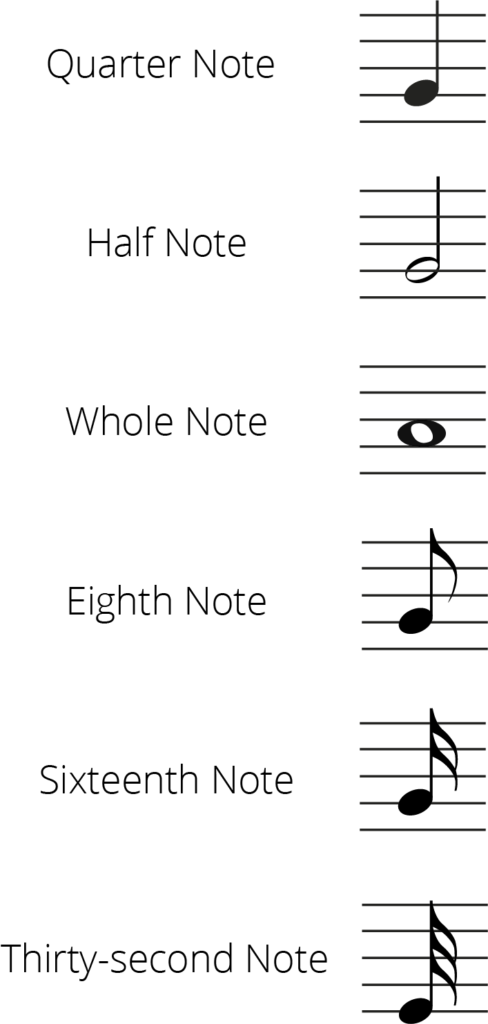
Rests (US)
Here are a list of the rests that match each note. These are in US terminology.

Dotted Notes and Rests (US)
Dotted notes and rests have one and a half times the value of the original note. You could say the dot adds half the value again to the note/rest.
For example a dotted quarter note is works 1 and 1/2 counts.
A dotted whole note is worth 6 counts (as a whole note is worth 4 on its own).
Here is a list of the main dotted notes and their values.
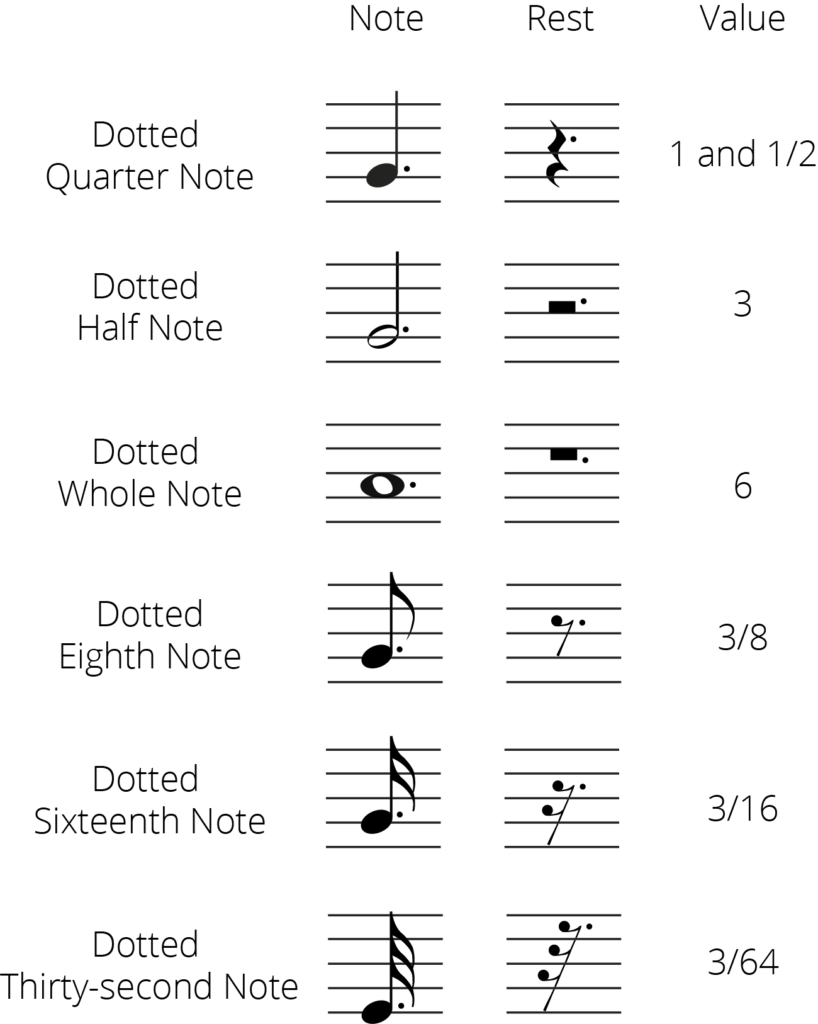
Double Dotted Notes and Rests (US)
Double dotted notes hold 1 and 3/4 of the value of the original note. Have a look at the example below.
The first dot on a note adds half the value of the main note and then the second dot adds half of the half. If we apply this to a quarter note, the first dot will add half the value of the quarter note, which is an eighth note. The second dot will then add half the value of the eighth note, which is a sixteenth note. So the note is worth 1 quarter note + 1 eighth note + 1 sixteenth note OR 1 and 3/4 counts.
Here is a diagram with all the main double-dotted notes and their values.
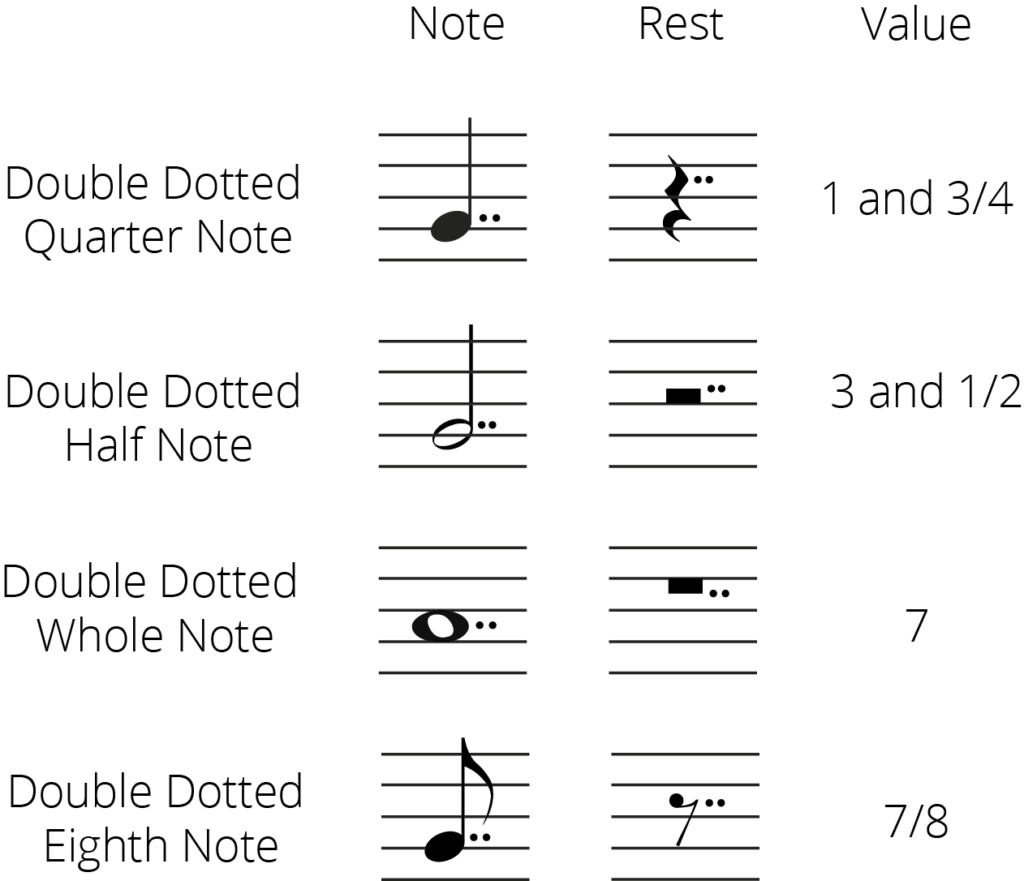
Triplets and Duplets (US)
Triplets are shown with a small ‘3’ above a group of three notes. This shows the player that these 3 notes should be played in the space of 2.
For example, below we have three eighth notes as a triplet. This means the 3 eighth notes should be played in the space of 2 eighth notes. We can do this when we have a simple time signature, such as 4/4, where are counts would usually divide into two eighth notes.

Duplets shown as two notes with a small ‘2’ above them. They are the opposite of triplets, meaning that we have two notes being played in the space of three. This can be useful when playing in a compound time signature where each strong beat should divide into 3.
